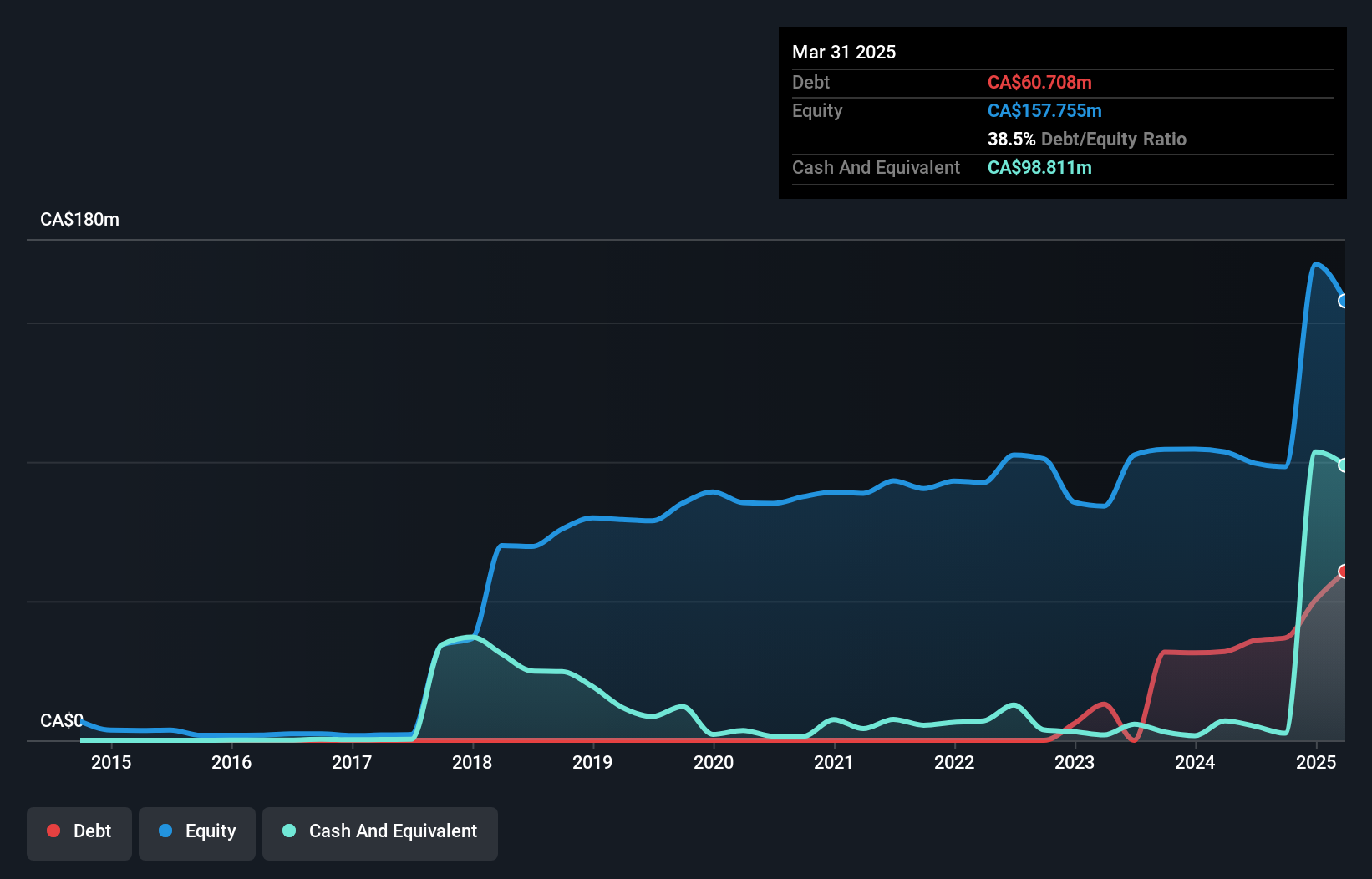Warren Buffett famously said, 'Volatility is far from synonymous with risk.' When we think about how risky a company is, we always like to look at its use of debt, since debt overload can lead to ruin. We can see that Osisko Metals Incorporated (CVE:OM) does use debt in its business. But the real question is whether this debt is making the company risky.
What Risk Does Debt Bring?
Generally speaking, debt only becomes a real problem when a company can't easily pay it off, either by raising capital or with its own cash flow. Ultimately, if the company can't fulfill its legal obligations to repay debt, shareholders could walk away with nothing. However, a more frequent (but still costly) occurrence is where a company must issue shares at bargain-basement prices, permanently diluting shareholders, just to shore up its balance sheet. Having said that, the most common situation is where a company manages its debt reasonably well - and to its own advantage. When we examine debt levels, we first consider both cash and debt levels, together.
What Is Osisko Metals's Net Debt?
As you can see below, at the end of March 2025, Osisko Metals had CA$60.7m of debt, up from CA$31.9m a year ago. Click the image for more detail. But it also has CA$98.8m in cash to offset that, meaning it has CA$38.1m net cash.

A Look At Osisko Metals' Liabilities
According to the last reported balance sheet, Osisko Metals had liabilities of CA$80.3m due within 12 months, and liabilities of CA$5.33m due beyond 12 months. On the other hand, it had cash of CA$98.8m and CA$1.26m worth of receivables due within a year. So it can boast CA$14.5m more liquid assets than total liabilities.
This short term liquidity is a sign that Osisko Metals could probably pay off its debt with ease, as its balance sheet is far from stretched. Simply put, the fact that Osisko Metals has more cash than debt is arguably a good indication that it can manage its debt safely. There's no doubt that we learn most about debt from the balance sheet. But ultimately the future profitability of the business will decide if Osisko Metals can strengthen its balance sheet over time. So if you want to see what the professionals think, you might find this free report on analyst profit forecasts to be interesting.
See our latest analysis for Osisko Metals
Given its lack of meaningful operating revenue, investors are probably hoping that Osisko Metals finds some valuable resources, before it runs out of money.
So How Risky Is Osisko Metals?
Statistically speaking companies that lose money are riskier than those that make money. And in the last year Osisko Metals had an earnings before interest and tax (EBIT) loss, truth be told. Indeed, in that time it burnt through CA$11m of cash and made a loss of CA$34m. But the saving grace is the CA$38.1m on the balance sheet. That means it could keep spending at its current rate for more than two years. Overall, its balance sheet doesn't seem overly risky, at the moment, but we're always cautious until we see the positive free cash flow. The balance sheet is clearly the area to focus on when you are analysing debt. However, not all investment risk resides within the balance sheet - far from it. For example Osisko Metals has 3 warning signs (and 2 which are concerning) we think you should know about.
Of course, if you're the type of investor who prefers buying stocks without the burden of debt, then don't hesitate to discover our exclusive list of net cash growth stocks, today.
New: AI Stock Screener & Alerts
Our new AI Stock Screener scans the market every day to uncover opportunities.
• Dividend Powerhouses (3%+ Yield)
• Undervalued Small Caps with Insider Buying
• High growth Tech and AI Companies
Or build your own from over 50 metrics.
Have feedback on this article? Concerned about the content? Get in touch with us directly. Alternatively, email editorial-team (at) simplywallst.com.
This article by Simply Wall St is general in nature. We provide commentary based on historical data and analyst forecasts only using an unbiased methodology and our articles are not intended to be financial advice. It does not constitute a recommendation to buy or sell any stock, and does not take account of your objectives, or your financial situation. We aim to bring you long-term focused analysis driven by fundamental data. Note that our analysis may not factor in the latest price-sensitive company announcements or qualitative material. Simply Wall St has no position in any stocks mentioned.
About TSX:OM
Osisko Metals
Engages in acquiring, exploring, and developing base metals deposits in Canada.
Moderate risk with adequate balance sheet.
Market Insights
Community Narratives


Recently Updated Narratives

TAV Havalimanlari Holding will fly high with 25.68% revenue growth


Fiducian: Compliance Clouds or Value Opportunity?


Q3 Outlook modestly optimistic
Popular Narratives


MicroVision will explode future revenue by 380.37% with a vision towards success


The company that turned a verb into a global necessity and basically runs the modern internet, digital ads, smartphones, maps, and AI.



